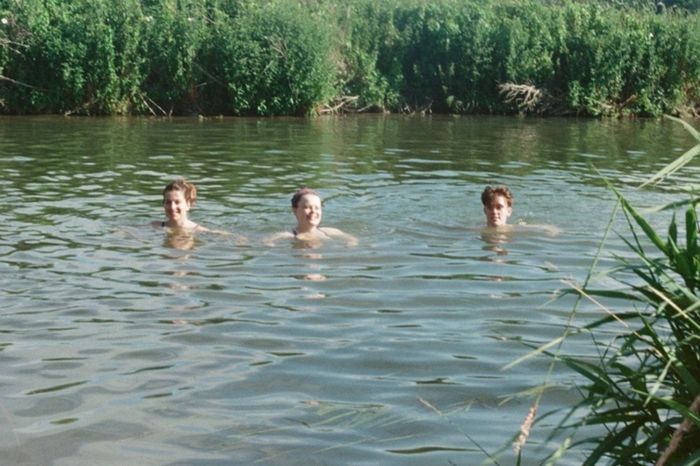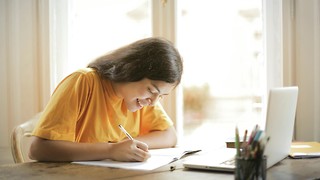Ways of seeing: in conversation with the ARCSOC life drawing community
Ruby Randall sits down with the ARCSOC life drawing community, who have learnt how to see in a different way than before

The smell of chalk; the snap, scratch and prickle of someone using graphite slightly too vigorously; hypnotic afro-funk and latin beats floating through, and two nude forms suspended in imagined motion on either side of the Department of Architecture’s studio.
In conversation with Z (Head of Life Drawing and second year Architect), she made the distinction that whereas all architectural drawings must be designed for a future purpose, life drawing is confined to the moment and space you find yourself in. Z also emphasised the difference between ‘naked’ bodies and ‘nude’ models: nakedness implies an omission, whereas the nude form simply presents the body in its honest state. Since life drawing is run for students, by students, ARCSOC’s sessions seem powered by the honesty and presentness that Z expressed.
“Drawing is all about being able to look and to see, and how well you can do that determines how well you can draw”
After this, I talked to David, a self-confessed ‘wannabe’ life model, who for ten years ran life drawing classes in London before deciding to don the robe, and pose in Cambridge.
He was first inspired when, as an A-level art student, he sat in on an evening class, and some years later went on to run his own sessions while enrolled in a Fine Art Foundation course. It was a jolt for David to return to “Art with a capital A” following the end of a long-term relationship and a long-hated job. But even after having made this switch, he found he’d lost his passion for drawing. David chalked this up to how “art school wasn’t interested in drawing and painting, so I looked at the possibility of switching to a different type of art school, a so-called ‘atelier’, which offered a more classical art education”. He deepened his interest in life drawing there, sketching the same model doing the same pose for days on end, “but I wasn’t good enough, I just couldn’t see as well as I needed to. I don’t mean I needed specs, rather that drawing is all about being able to look and to see, and how well you can do that determines how well you can draw. So I knew I had to change tack”.
“Modelling makes you appreciate your own body’s capabilities”
This led him to exclusively practice life drawing, which allowed for the freedom, and artistic intimacy with his subject that “the world of contemporary fine art” denied. David aligned this with the fact that ‘proper art’ “is always trying to move the fine art conversation along, to stay relevant, to innovate, but art as a hobby doesn’t really move on, it’s not really tied to the world of contemporary fine art in my opinion. Parallel universes, if you like”. Though life drawing has “persisted in spite of the twists and turns of art history,” David thinks that, “as far as contemporary fine art is concerned, life drawing is an irrelevant old hat”. But then again, “most people who enjoy life drawing aren’t part of the art establishment”. Movement and endurance seems integral to life drawing, far from how it may be formally perceived.
For Zoe, a veteran to life modelling, it goes beyond movement, towards a greater understanding of embodiment itself. Having also drawn in ARSCOC, she expanded on how “you get to appreciate the human form when you draw, but modelling makes you appreciate your own body’s capabilities”. Both processes occur simultaneously, but independent of each other: “as the draw-er, I felt the model was the person designing the art, but as the model, I feel the art belongs much more to the people holding the pens than to me. The agency I feel relates more to how I hold myself”.
“There’s a triangle you need to figure out how to draw, and it just so happens that that is someone’s breast”
Perhaps due to this distance, though modelling feels intimate, Zoe doesn’t feel unsafe. Indeed, her thoughts during and around posing show a disconnect, where “most of my thoughts about life drawing come from the immediate time surrounding it, not the minutes when I’m holding the pose. To be honest I find it a good way to clear my head”.
Seeking balance within her body was why she started modelling in the first place. “I was sexually assaulted in my first year at uni by someone I knew as an acquaintance, and who I had a lot of mutual friends and shared activities with. I then spent the next months in a state of constant discomfort. It felt like everyone I met, everyone who could see me, was looking at me in a predatory, sexual way. It felt like I couldn’t go outside – like I was trapped because of my body.” However, she articulates how modelling helped with this disjointed self-perception: “when you’re drawing a life model, you aren’t seeing their anatomy as sexual, or necessarily even desirable. There’s a triangle you need to figure out how to draw, and it just so happens that that is someone’s breast”.
As a controlled practice, then, life drawing can alter perception and habits of interaction. It reconsiders what art can be, and what the body is. For Z, David, and Zoe, it becomes a mode of meditation, unpicking presentness and the nature of seeing.
 News / Uni redundancy consultation ‘falls short of legal duties’, unions say6 December 2025
News / Uni redundancy consultation ‘falls short of legal duties’, unions say6 December 2025 News / Cambridge students accused of ‘gleeful’ racist hate crime4 December 2025
News / Cambridge students accused of ‘gleeful’ racist hate crime4 December 2025 Music / The trials and tribulations of indie collabs 6 December 2025
Music / The trials and tribulations of indie collabs 6 December 2025 News / News In Brief: elevated prices, eliminated neutrinos, and enormous anacondas 7 December 2025
News / News In Brief: elevated prices, eliminated neutrinos, and enormous anacondas 7 December 2025 News / Gov declares £31m bus investment for Cambridge8 December 2025
News / Gov declares £31m bus investment for Cambridge8 December 2025









